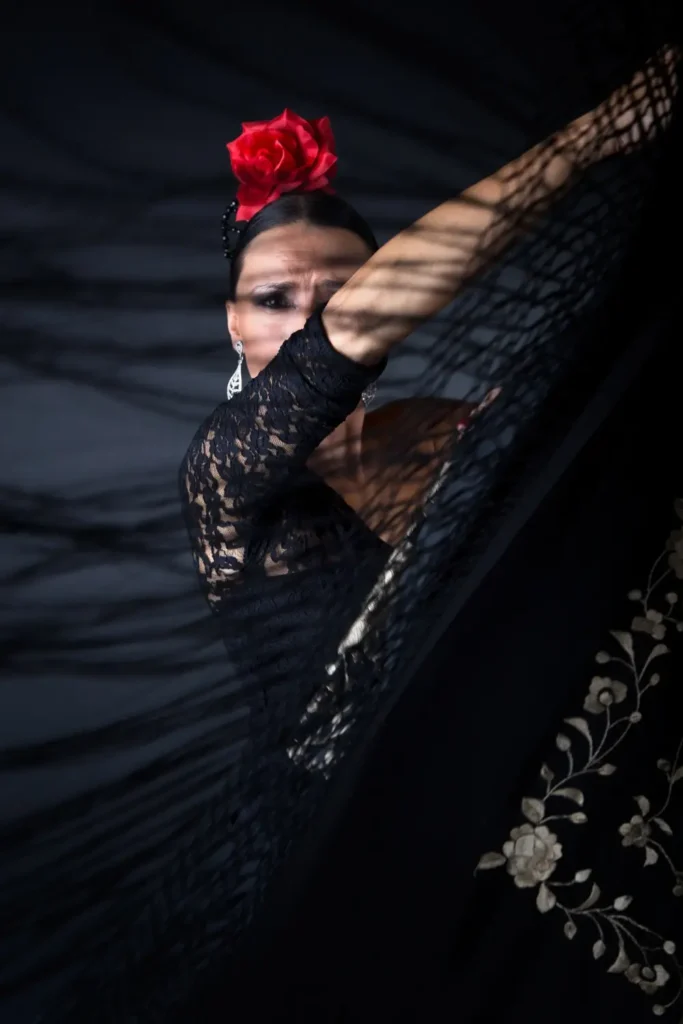Flamenco, the Soul of Andalusia
When we hear the word “flamenco”, a definition comes to mind that goes beyond a simple musical style. It’s a term that connects us with the Andalusian soul.
Besides being a type of music, singing, and dance, it’s an art that has come to conquer people all over the world. Flamenco is passion, history, tradition, feeling, and for many, a way of life.
In 2010, flamenco was declared Intangible Cultural Heritage of Humanity by UNESCO.
Flamenco is defined as one of the richest and most diverse artistic expressions recognized internationally.
It is said that this art was born in southwestern Spain, with Granada being one of the Andalusian cities with a prominent role in its origin and development.
The Origin of Flamenco, a Multicultural Mix
When we talk about flamenco, we must talk about cultural fusion since it was born from the cultural mix between Muslims, Jews, Gypsies, and Christians who coexisted back in the 16th century in certain areas of Andalusia.
Although the famous “Golden Triangle” formed by Cádiz, Jerez de la Frontera, and the Triana neighborhood of Seville is often mentioned, we cannot overlook the importance of Granada in the transcendence of flamenco.
Around the year 1425, Gypsy groups began to arrive in Andalusia, and after the Christian conquest of Granada in 1492, they were heavily persecuted, as were the Jews and Moriscos.
Many of these Gypsies grouped together in the mountainous areas of Granada’s Sacromonte to seek refuge, and there, various musical traditions began to fuse, giving rise to a foundation full of modal melodies, rhythms, and expressions that would lead to cante jondo.
History of Flamenco, from a Clandestine Art to International Acclaim
For hundreds of years, flamenco lived clandestinely, transmitted orally within Gypsy families. From the 18th century, it began to have some presence in certain towns and cities, especially in private gatherings of the Andalusian aristocracy, where some “flamenco parties” were held.
In the 19th and early 20th centuries, cafés cantantes emerged, which were establishments where flamenco shows were organized in a relaxed style, where artists sang, danced, and the audience participated by cheering on the performers.
In this context, the city of Granada was crowned as the cradle of cante jondo, as it is a city with a large influx of cultural tourism during the Romantic period.
Sacromonte: The Ultimate Flamenco Cradle History

The Gypsies who began arriving in Andalusia in the 15th century served in the army of the Catholic Monarchs as they contributed their knowledge of weapons and cavalry. Gradually, they settled in the Sacromonte neighborhood (where Jews and Arabs were already established).
Sacromonte is one of the most emblematic areas of Granada and means “Sacred Mountain” due to the belief that sacred Christian relics were found in this place in the 16th century. The most notable aspect of Sacromonte is that it has caves in the rock that served as refuge and housing for these Gypsy and Morisco peoples expelled from the city center. In their cave houses, they had a space where they could freely live their culture, celebrate their dances and songs full of feeling and vivacity, to the rhythm of clapping and guitars.
The Zambra: The Purity of Granada Flamenco
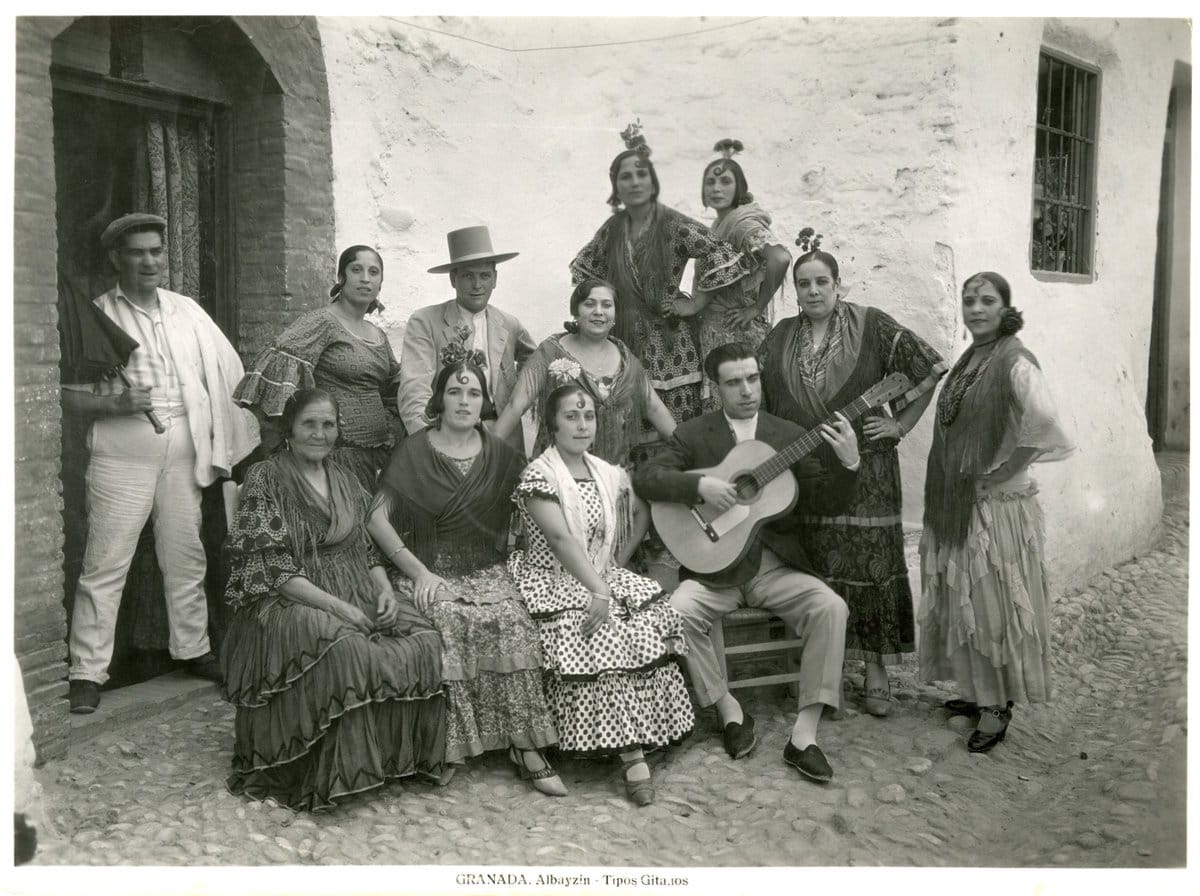
The zambra is a type of “gathering” that was already celebrated in Morisco weddings of the 16th century. Its name comes from the Andalusian Arabic zamra, which in turn comes from the classical Arabic “zamr”, meaning music or concert. The zambra was organized clandestinely as it was persecuted by the Inquisition, but it managed to survive and endure, becoming the origin of the Granada flamenco style.
The characteristic of the zambra is that in this style, a long skirt is used, the dancers’ feet are bare, and they dance to the rhythm of castanets, very similar to belly dancing.
The gypsies of Sacromonte also incorporated this dance style into their weddings, but they gave it their personal touch, adding “their art” with various details such as, in addition to bare feet, wearing a blouse tied below the chest and a long pleated skirt that sat at hip level. Gradually, the zambra transformed into what we now know as a pure Granadian flamenco show.
The Rise of Flamenco with the Arrival of Romanticism
Granada began to experience a wave of European Romantic writers and travelers during the 18th and 19th centuries, completely seduced by the Granadian spell. Flamenco shows took place in the caves of Sacromonte, and this folklore began to gain great popularity. The Gypsies, aware of the great interest their performances were generating, began staging spontaneous acts at the entrances of their caves, and thus the famous flamenco shows of the Sacromonte caves were born.
Discovering Flamenco Styles and Their Emotional Representation
Flamenco encompasses a wide variety of styles known as palos, which are linked to different emotions. Through each palo, the artist conveys their feeling, which can be joy, passion, sorrow, or desire, among others.
Los palos del flamenco más conocidos son:
- Soleá: Very emotional, a melancholic and profound style.
- Alegrías: As its name indicates, it has a more euphoric, fast, and festive connotation.
- Fandangos: A lighter, melodic, and rhythmic style with great interpretative freedom.
- Bulerías: It has a festive, fast touch with an improvised structure.
- Malagueñas: Slow, melodic, and profound, originating from the eastern part.
- Granaínas: A style originating from Granada, it has no fixed beat, is freer but deeply emotional.
Legendary Figures of Granadian Flamenco
Granada has its popular flamenco figures, such as:
María la Canastera
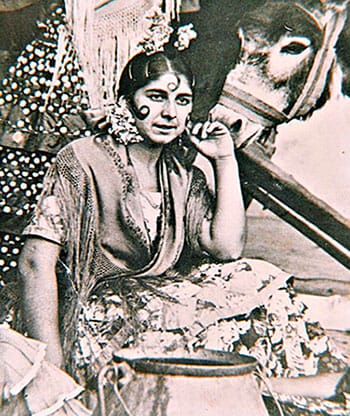
A pioneer in popularizing gypsy zambras to the general public. She was a very famous bailaora from Sacromonte between the 1950s and 60s. She received great international celebrities in her cave.
Rafael Fajardo “El Piki”
El Piki is a well-known flamenco dancer and choreographer. He directed shows and with his mastery trained various generations of dancers.
La Gazpacha
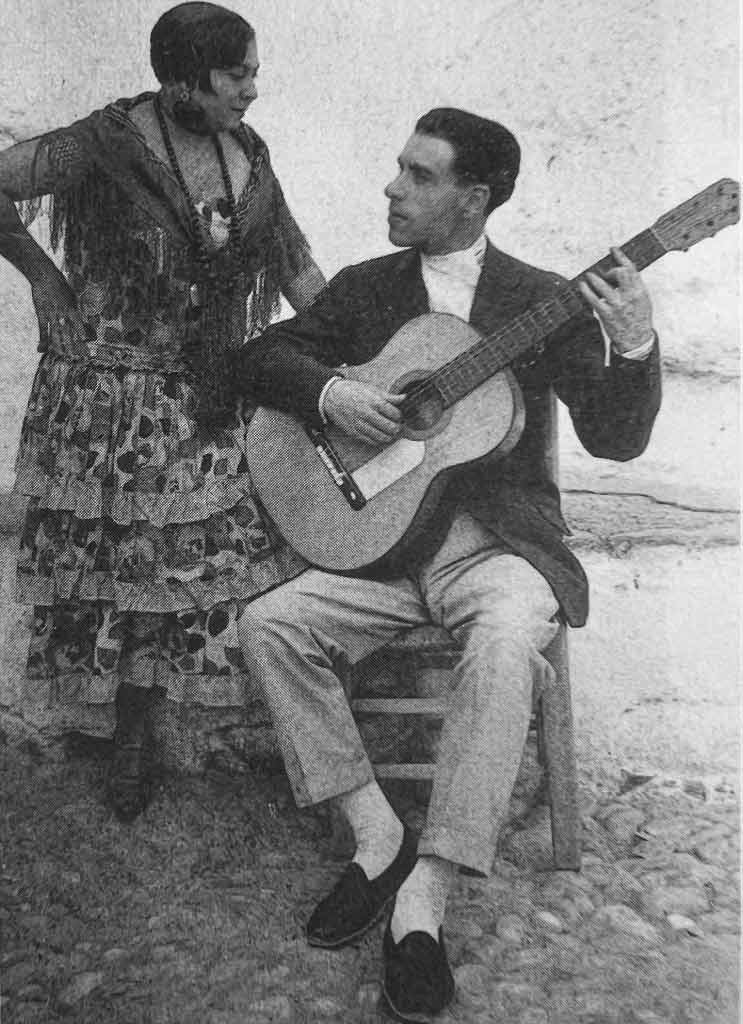
Coming from the Amaya family (currently managers of the Tablao Flamenco Albayzín), she was a well-known flamenco singer in Sacromonte in the mid-20th century. She had a rather peculiar nickname, which is very typical within flamenco culture.
Curro Albaicín
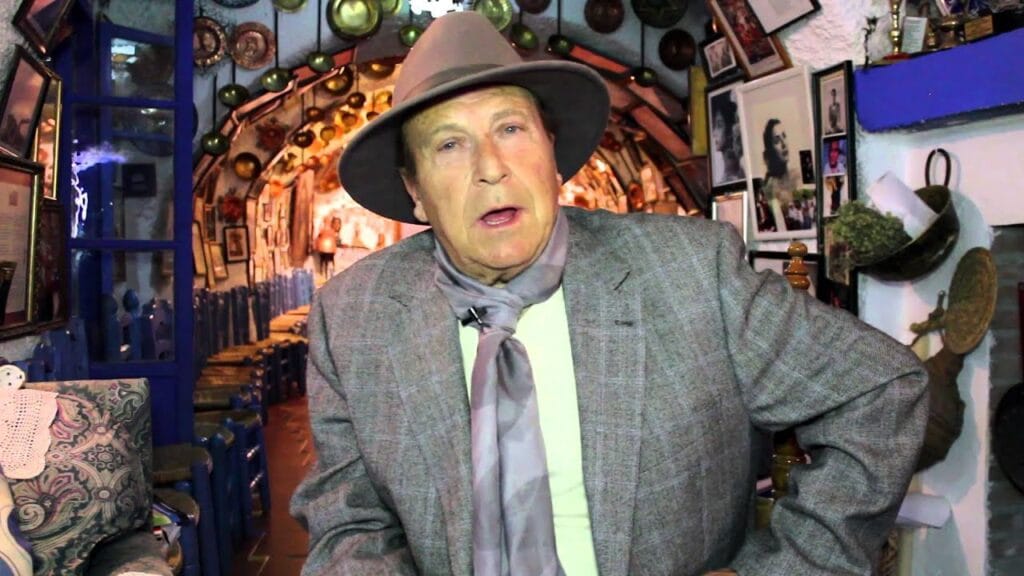
Singer, poet, and champion of the zambra and flamenco traditions of Albaicín and Sacromonte.
José Ferrer “El Niño de las Almendras”
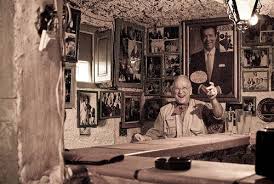
Granadian flamenco singer who was born in the early 20th century. He was well-known locally, but not so much outside of Andalusia. He had an expressive voice, with a lot of feeling.
Flamenco will always be linked to an art of the people, and for this reason, artists of the Generation of ’27 such as Federico García Lorca and the composer Manuel de Falla, organized the first flamenco singing contest, which was held in 1922 in Granada.
Flamenco and Granada, an Eternal Bond
Granada is, and possibly will always be, a city linked to flamenco. Currently, tourists from all over the world visit the city in search of experiencing pure flamenco in the caves of Sacromonte and in the flamenco tablaos scattered throughout the city.
Las zonas clave dónde encontrar espectáculos flamencos en Granada son:
- Sacromonte.
- Albaicín.
- Historic Center.
Watching a flamenco show is a must-do activity for anyone who sets foot in the city of Granada. In fact, it is said that “If you come to Granada and don’t see a flamenco show, you haven’t seen anything.”
Flamenco Workshops and Training in Granada
Granada also has many specialized schools for flamenco singing, dancing, and guitar. It is also a reference point for craftsmanship, as many flamenco guitars of unparalleled quality are manufactured here. The city is a key point for anyone interested in this folkloric art, both locals and international students.
We can say that Granada is undoubtedly a city with great prominence in the origin and significance of flamenco.
Granada has nurtured this culture from its emergence in the zambras of Sacromonte until today, with contemporary flamenco shows. It is an art that has managed to maintain its essence for centuries, despite its clandestine nature and persecution throughout history.
Today, it continues to move those who have the privilege of experiencing it.
Flamenco is part of Granada’s history, there will always be a very strong connection. And if you’ve read this, and you still haven’t seen a pure flamenco show, what are you waiting for? Like all great artistic expressions, it is better understood when experienced.

